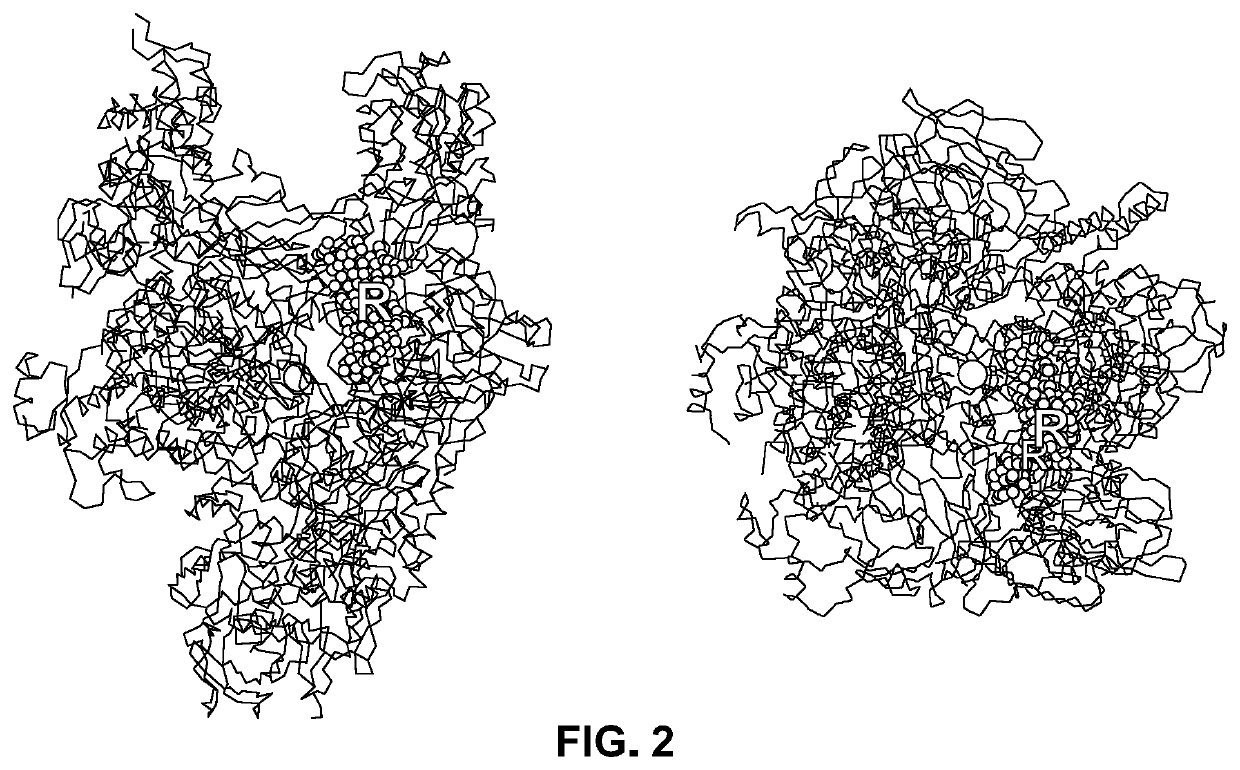Antibacterial agents: dual-targeted RNA polymerase inhibitors
a technology of rifamycin and polymerase inhibitor, which is applied in the field of antibacterial agents based on dual-targeted rna polymerase inhibitors, can solve the problems of threatening the clinical utility of rifamycin antibacterial agents, infections that pose a grave and growing threat to public health, etc., and achieves potent effects and drug-sensitive effects
- Summary
- Abstract
- Description
- Claims
- Application Information
AI Technical Summary
Benefits of technology
Problems solved by technology
Method used
Image
Examples
example 1
of 2-fluoro-N-(1-((5-fluoro-2-(piperazin-1-yl)phenyl)amino)-1-oxo-3-phenylpropan-2-yl)benzamide (IX-214)
[0205]
IX-214 was synthesized as in Ebright, R. H., Ebright, Y., Mandal, S., Wilde, R., and Li, S. (2015) WO2015 / 120320.
Example 2: Synthesis of (R)-2-fluoro-N-(1-((5-fluoro-2-(piperazin-1-yl)phenyl)amino)-1-oxo-3-phenylpropan-2-yl-3,3-d2)benzamide (IX-370a)
[0206]
example 2.1
4-fluoro-2-nitrophenyl)piperazine-1-carboxylate
[0207]
[0208]To a solution of 2,5-difluoronitrobenzene (3.2 mL; 29.5 mmol; Sigma-Aldrich) in ethanol (59 mL), was added 1-Boc-piperazine (6.05 g; 32.5 mmol; Sigma-Aldrich) and triethylamine (4.11 mL; 29.5 mmol; Sigma-Aldrich), and the reaction mixture was stirred 16 h at 50° C. and then allowed to cool to room temperature. The reaction mixture was evaporated and then extracted with ethyl acetate (30 mL). The extract was dried over anhydrous sodium sulfate, filtered, and evaporated to dryness, and the crude product was purified by silica chromatography (ethyl acetate / hexanes gradient). Yield: 6.18 g; 64%. 1H NMR (500 MHz, CDCl3): δ 7.51 (dd, 1H), 7.26-7.23 (m, 1H), 7.17 (dd, 1H), 3.56 (t, 4H), 2.95 (brs, 4H), 1.47 (s, 9H).
example 2.2
2-amino-4-fluorophenyl)piperazine-1-carboxylate
[0209]
[0210]To a solution of t-butyl 4-(4-fluoro-2-nitrophenyl)piperazine-1-carboxylate (6.18 g; 19 mmol; Example 2.1) in ethanol (79 mL), was added 10% Pd / C (794 mg; Sigma-Aldrich) and hydrazine monohydrate (4.3 mL; 88.65 mmol; Sigma-Aldrich), and the reaction mixture was stirred 1 h at 80° C. After cooling to room temperature, the reaction mixture was filtered through a pad of Celite 521 (Sigma-Aldrich). The filtrate was concentrated to an oil, re-dissolved in ethyl acetate (80 mL), dried over anhydrous sodium sulfate, filtered, and evaporated to dryness. The crude product was used in the next step without further purification.
[0211]Crude yield: 5.62 g; 99%. 1H NMR (500 MHz, CDCl3): δ 6.90-6.86 (m, 1H), 6.44-6.37 (m, 2H), 4.13-4.10 (m, 2H), 3.56 (br, 4H), 2.78 (brs, 4H), 1.48 (d, 9H).
Example 2.3: D-phenylalanine-3,3′-d2
[0212]
[0213]D-phenylalanine-3,3′-d2 was prepared using procedures described for preparation of L-phenylalanine-3,3′-d...
PUM
| Property | Measurement | Unit |
|---|---|---|
| molecular mass | aaaaa | aaaaa |
| molecular mass | aaaaa | aaaaa |
| resistance | aaaaa | aaaaa |
Abstract
Description
Claims
Application Information
 Login to View More
Login to View More - R&D
- Intellectual Property
- Life Sciences
- Materials
- Tech Scout
- Unparalleled Data Quality
- Higher Quality Content
- 60% Fewer Hallucinations
Browse by: Latest US Patents, China's latest patents, Technical Efficacy Thesaurus, Application Domain, Technology Topic, Popular Technical Reports.
© 2025 PatSnap. All rights reserved.Legal|Privacy policy|Modern Slavery Act Transparency Statement|Sitemap|About US| Contact US: help@patsnap.com



